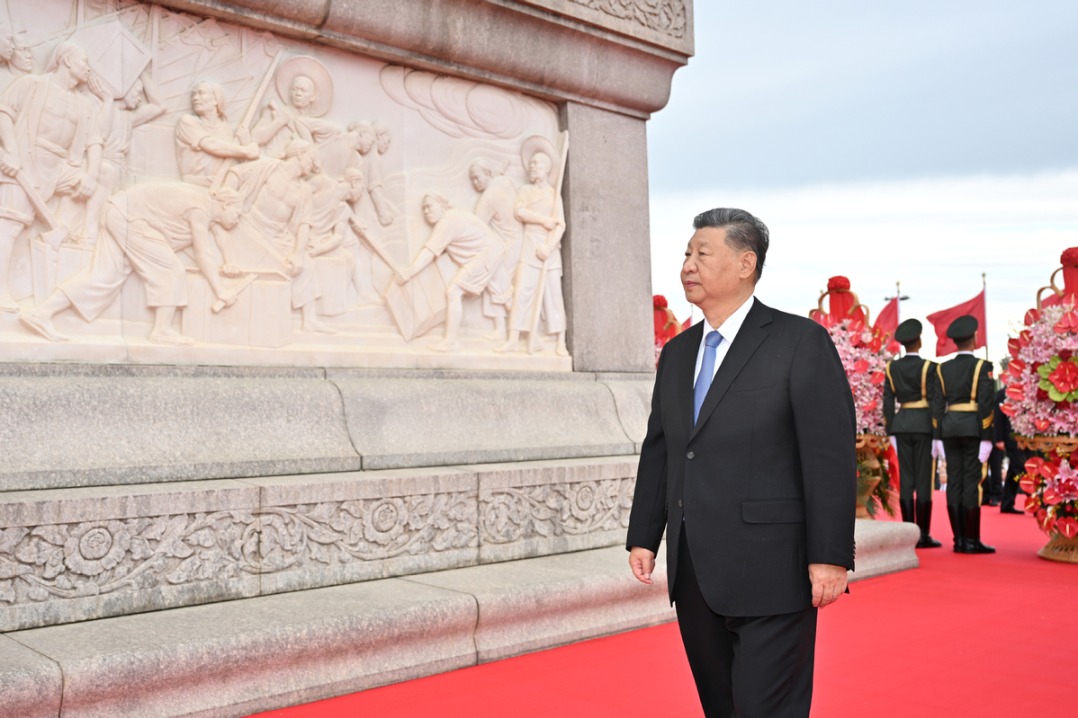Hydropower propels China's climate action
Asit K. Biswas and Cecilia Tortajada | Updated: 2023-08-03 10:39

China has made the right policy decision to expeditiously increase its economically efficient and eco-friendly hydropower capacity, which will boost the country's long-term efforts to shift from fossil fuels to renewable energy. Simultaneously, China is also using dams to manage extreme hydrological events such as heavy floods and prolonged droughts due to climate change.
This will help China to better manage the effects of rainstorms and extensive flooding, as seen in the northern part of the country. Continuous downpours have lashed North China. The mountainous districts of Mentougou and Fangshan in Beijing are among the worst-affected areas by the unprecedented downpours in northern China.
It is to better manage such natural disasters that China has invested massive resources in research and development, in order to significantly improve technologies for dam construction and improve their management. In contrast, Western economies like the United States, European countries, Japan and the Republic of Korea, have not focused on serious dam-related research for the past three to four decades. Thus, not surprisingly, the rest of the world is decades behind China in terms of hydropower research.
In recent years, global attention has been mainly focused on China's solar and wind electricity generation, because of the rapid advances the country has made in reducing per unit cost of generating clean energy, which has lowered the cost solar and wind power generation compared with fossil fuel-powered energy in most countries.
But despite the global focus on China's solar and wind energy, hydropower remains the biggest renewable energy source for China, and will remain so for decades to come. For example, hydropower accounted for 16 percent of China's total electricity generation in 2020, with wind and solar power accounting for 6 percent and 4 percent and other sources 2 percent.
While China's pre-eminence in generating solar and wind power is well known, what is mostly unknown is that in the past 15 years, China has become the leading global hydropower producer among developing countries.
In addition, it is five to 10 years ahead of other countries in terms of generation hydropower and implementing pumped storage plans by extensively using sensors, robots, big data analytics and artificial intelligence.
Dams to generate power and help prevent floods
The Dadu River hydropower authority is an excellent example of the major advances China has made in this field.
The Dadu River is a tributary of the mighty Yangtze River. Located mainly in the mountainous region of Sichuan province, the Dadu River Basin has the 5th largest hydropower generation potential in China, at 34.59 million kW.
The Dadu River has a natural drop of 4,175 meters, providing enough room for the construction of 28 dams for hydropower generation, flood mitigation and drought management. When all the dams are built, they will have an installed capacity of more than 28 GW and will generate 115,800 GWh of electricity each year.
After its completion in 2024, the Shuangjiangkou dam will be the highest dam in the world at 315 meters. It will have an installed capacity of 2 GW and a reservoir capacity of 2.9 billion cubic meters. This dam alone will save carbon emissions of about 7.18 million tons per year.
The cascade of 28 dams will optimize the use of water and power generation, thus contributing to seasonal, annual and multi-year regulation of the river's flow. In fact, the dams and reservoirs that have already been built have helped greatly reduce floods and droughts.
The dams already in operation helped the relevant departments to better manage the floods on Aug 18, 2020. In early August 2020, the Dadu River Hydro-meteorological Forecast Center issued an early warning against heavy rainfall from Aug 12 to 18. It rightly forecast that at the peak of the flood at the Gongzui power station, the water flow may exceed 10,000 cubic meters per second.
Therefore, three days before the major flood, the Pubugou reservoir released significant volumes of water so it could store the excess floodwaters diverted to it. And on the day of the deluge on Aug 18, the Pubugou reservoir managed to store 500 million cubic meters of floodwaters, and the Dadu River hydropower authority reduced the discharge from Pubugou Dam to 1,000 cubic meters per second and the peak flow downstream of the Gongzui power station from 12,600 cubic meters per second to 7,500 cubic meters per second. Thanks to these efforts, China prevented what could have been the catastrophic impacts of once-in-a-century flood.
This was made possible by the extensive use of sensors, robots, high-definition photographs and sound, big data analytics, the internet of things and mobile internet to collect, transmit, store and analyse data. High-definition photos and sound systems, backed by the collected data, enabled remote site monitoring and helped the hydropower authority to better understand the situation, which in turn helped the authority to effectively simulate physical on-site conditions and take appropriate measures to improve the situation.
Vital climate goals achievable
Given the progress China has made up to now, it is set to achieve its two vital climate goals — of peaking its carbon emissions before 2030 and on a sustainable path to achieve carbon neutrality before 2060 — on schedule.
China has also promised that as part of its Nationally Determined Contribution, it will increase its wind and solar energy capacity to 1,200 GW by 2030. When China made the NDC commitment, it was considered a very ambitious target, with skeptics saying the target is unachievable. But China's offshore and onshore wind energy generation capacity is now more than 310 GW, roughly equal to the capacity of the next seven countries combined, and its solar power generation capacity exceeds 379 GW, which is more than the rest of the world's. This means China can fulfil its NDC commitment by 2025, five years ahead of schedule.
China's 14th Five-Year Plan (2021-25) says renewable energy generation capacity will be increased from 2.2 trillion kilowatt hours in late 2020 to 3.3 trillion kWh by 2025. Also, by 2025, renewable energy consumption, as a percentage of total electricity consumption in China is expected to increase to 33 percent from 28 percent in 2020. And according to China's plan, half of the country's incremental electricity generation will come from renewable sources by 2025, which will reduce 2.6 gigaton of carbon emissions a year, equivalent to almost 25 percent of China's total carbon emissions in 2020.
China, like the rest of the world, will face major challenges in the coming decades including how to transition from fossil fuels to renewable energy and how best to mitigate the adverse impacts of climate change due to extreme hydro-meteorological events which are likely to occur more frequently, intensely and often last longer in the future. But, as the experience from Dadu River hydropower authority indicates, that with enlightened leadership and the use of cutting-edge technologies and constant innovation, hydropower should be possible to manage extreme weather events in the future.
Asit K. Biswas is a distinguished visiting professor at the University of Glasgow, Scotland, director of Water Management International, Singapore, and chief executive, Third World Centre for Water Management, Mexico; and Cecilia Tortajada is a professor at the School of Social and Environmental Sustainability, University of Glasgow.The views don't necessarily reflect those of China Daily.
If you have a specific expertise, or would like to share your thought about our stories, then send us your writings at opinion@chinadaily.com.cn, and comment@chinadaily.com.cn.
























